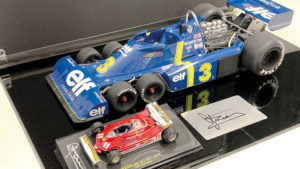Finding the right scale for your racing car models
The Expert View: A question of scale

The collectibles market is well-populated with scale models, but regardless of what direction your collection takes, scale is an area that often confuses some people because the bigger the number, the smaller the model.
There is a huge range of scale productions on the market too, from life-size down to pocket-sized (Hot Wheels or Matchbox) and even tinier creations. But of all the scales, 1:18 and 1:43 are the most popular, and there’s a bit of history behind this. The 1:43-scale models really rose to prominence before the War, purely because that was the chosen scale for Dinky toys and Hornby’s 0-gauge trains. Everything that was made to go with those models was set in that scale to match, and it’s stuck ever since. The 1:18 size was designed to fit doll’s houses. Turns out it works nicely for models as well.

For motor racing 1:18 and 1:43 rule. People love 1:43 as they can have huge collections and not lose a load of space, plus the variety is enormous. The cheaper end is from China, but then you get brands like Spark which uses resin and hand-finishes the models so they’re of great quality. Minichamps is another good one; high on quality and the prices reflect that. Usually resin moulded, 1:18s boast a bit more detail, and they’re a lot easier to sign.
And just when you think you’ve got scale sussed, try helmets. With these, a 1:2-scale has become common as it takes up only a quarter of the footprint of the real thing. Whatever scale you prefer, enjoy the miniature detail.
Andrew Francis is director at The Signature Store
thesignaturestore.co.uk
